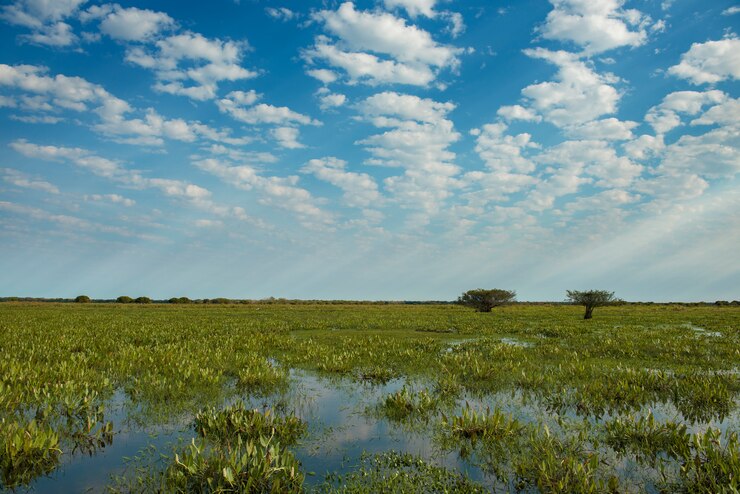Preserving and restoring wetlands in agricultural landscapes is crucial for maintaining ecological balance, supporting biodiversity, and ensuring sustainable farming practices. Wetlands provide numerous benefits, including water filtration, flood control, carbon sequestration, and habitat for a wide range of plant and animal species. Here are some key considerations and strategies for preserving and restoring wetlands in agricultural areas:
- Wetland delineation: Identify existing wetlands on agricultural lands through wetland delineation, which involves assessing the presence of hydrophytic vegetation, hydric soils, and wetland hydrology. This step helps determine the extent and boundaries of wetlands that need to be protected.
- Buffer zones: Establish buffer zones around wetlands to minimize the impacts of agricultural activities. These buffer zones act as protective barriers, reducing runoff of sediment, nutrients, and agrochemicals into wetland areas. Buffer zones can consist of native vegetation that acts as a natural filter.
- Conservation easements: Encourage landowners to establish conservation easements, which are legal agreements that restrict certain land uses in perpetuity. Easements can be used to protect wetlands from drainage, conversion, or other forms of agricultural intensification.
- Sustainable drainage practices: Implement sustainable drainage practices, such as contour plowing, terracing, and grassed waterways, to reduce soil erosion and nutrient runoff from agricultural fields. These practices help maintain water quality in wetland areas downstream.
- Wetland creation and restoration: Identify suitable areas for wetland creation or restoration within agricultural landscapes. This could involve converting marginal or flood-prone agricultural lands back into wetland habitats. Restoration efforts may include re-establishing native vegetation, restoring hydrology, and removing invasive species.
- Water management: Manage water resources in agricultural landscapes to support wetland health. This includes maintaining natural hydrological regimes, regulating water levels, and controlling invasive species that can negatively impact wetland ecosystems.
- Education and outreach: Increase awareness among farmers, landowners, and local communities about the importance of wetland conservation. Provide educational resources, workshops, and financial incentives to encourage the adoption of wetland-friendly agricultural practices.
- Collaboration and partnerships: Foster collaboration among farmers, conservation organizations, government agencies, and researchers to develop and implement wetland preservation and restoration programs. By working together, stakeholders can pool resources, share knowledge, and achieve more significant conservation outcomes.
- Policy support: Advocate for policies and regulations that protect wetlands in agricultural landscapes. Encourage government agencies to integrate wetland conservation considerations into agricultural land-use planning and provide incentives for wetland restoration.
Preserving and restoring wetlands in agricultural landscapes is a multifaceted endeavor that requires a combination of scientific knowledge, policy support, and stakeholder collaboration. By implementing these strategies, we can ensure the long-term viability of wetland ecosystems while promoting sustainable agriculture.
Join 'Farmers Mag' WhatsApp Channel
Get the latest Farming news and tips delivered straight to your WhatsApp
CLICK HERE TO JOIN






